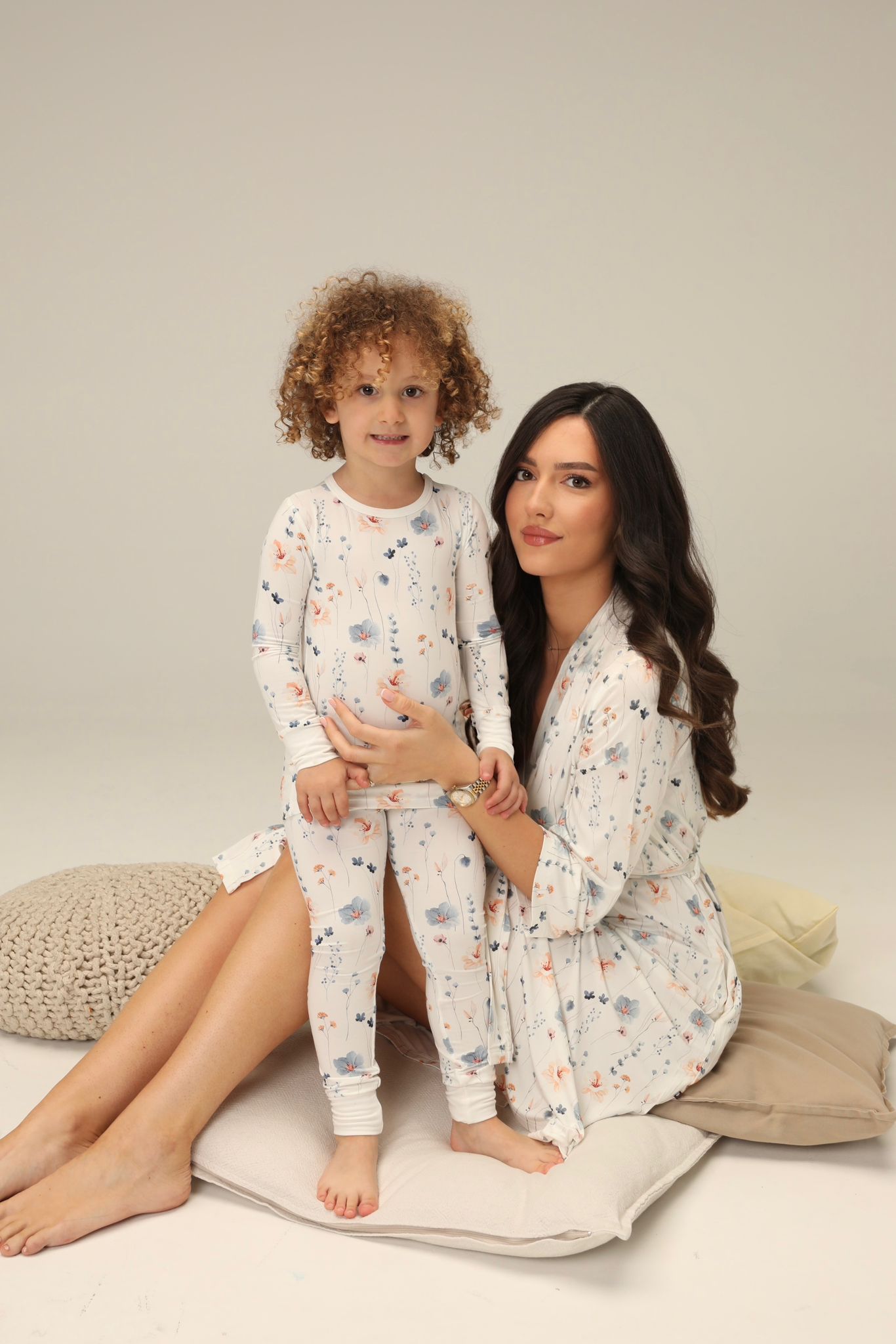Safety is always the first question, and the right one to ask. Yes, baby bows are safe, as long as they’re used thoughtfully and made from gentle, non-irritating materials.
The most important factor is supervision. A bow should never be worn when your baby is sleeping or left unattended, especially during the newborn stage. Even soft, stretchy bows can shift or slide down, and anything near a baby’s face during sleep is a risk. Save bows for awake time, photo moments and outings where you can gently adjust them as needed.
Fit also matters. A bow should sit snugly without leaving marks or feeling tight. Too loose, and it may slip into your baby’s eyes or mouth. Too tight, and it can irritate the skin or scalp. Choose bows designed to offer a gentle stretch that adapts with your baby’s head shape without squeezing or slipping.
Another common concern is choking hazards. Avoid bows with small parts, beads, clips or glued elements that could detach. Soft fabric bows with fully sewn construction are the safest choice for infants and newborns.
Keep in mind that bows aren’t meant for all-day wear. They're ideal for short periods, like meeting loved ones, special events or creating photo memories. Use them like you would a special outfit - something thoughtful, not constant.
Finally, always remove bows before naps, bedtime or time in the car seat. Even well-fitted bows are safest when worn under your supervision.
A bow can be a sweet, beautiful touch to your baby’s outfit, but safety starts with awareness and smart design.


